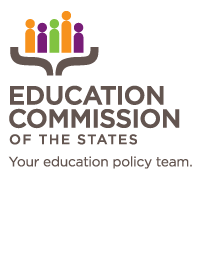Funding for students who require special education services continues to be a hotly debated topic for state policymakers. More than half of states are actively trying to change the way in which special education funding flows to districts, schools and eventually classrooms. So what are policymakers trying to solve? And what are the trends in special education funding mechanisms across the country?
So far in the 2019 legislative sessions, legislators in 28 states have introduced at least 99 bills to modify the way in which special education funding is distributed to districts and charter schools. In these bills, states are broadly trying to do one of three things:
- Match the amount of funding to the actual costs of services.
- Increase the amount of funding or find an alternative revenue source.
- Provide districts with additional funding to cover extraordinary expenses.
What do these pieces of legislation look like? Here are some examples currently pending in statehouses.
Match the amount of funding to the actual cost of services
Historically, many states have provided a flat-dollar amount per student, regardless of the demographic makeup of a district. However, states are moving toward a more modern distribution model, providing districts or schools with varying amounts of funding to more closely cover the cost of services. Georgia funds special education services by providing additional funding through five categories, based on the cost of services provided to students. H.B. 527 would increase each of Georgia’s five weights to keep up with increasing service costs. Similarly, Oklahoma's S.B. 362 increases the weight for a speech or language impairment by 0.1 in the 2020-21 school year, with a total of 0.15 weight attached to it each year thereafter.
Increase the amount of funding or finding an alternative revenue source
Minnesota has the highest number of pieces of 2019 special education funding legislation, with 22 pending bills. H.F. 1162 would shift some of the financial responsibility by requiring states to fund more of the difference between a school district’s special education spending and its special education revenue. The increase would be 3.3 percent in fiscal year 2020 and increase to 13.2 percent in fiscal year 2023 and later. In Colorado, S.B. 19-066 would create a separate fund to be used for high-cost special education grants to public schools that have made significant expenditures on services for a child with a disability. Beginning in the 2019-20 fiscal year, an annual appropriation from the marijuana tax cash fund would be made to the high-cost special education fund.
Provide districts with additional funding to cover extraordinary expenses
Because of the financial burden that certain special education services can impose on a district, 13 states provide additional funding for very high-cost students. Maine’s L.D. 791 would require the state to provide school districts or charter schools with 100 percent of the funding needed to cover high-cost special education students. S.B. 2 in South Dakota would tie the annual appropriation for extraordinary special education costs to an inflation factor so that the appropriation would increase annually.
Providing funding for students who require special education services can be costly and unpredictable to states, school districts and schools. However, policymakers are continuing the conversation to strengthen funding mechanisms to best serve these students.
Information on all 50 states’ special education funding mechanisms can be found here in our new 50-State Comparison.







